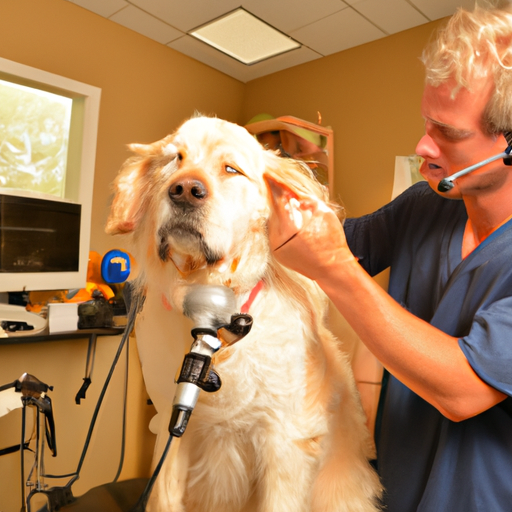Introduction
As someone who loves and cares for your canine companion, you might be keen to ensure their overall wellbeing. One critical aspect of their health is their hearing. Just as with humans, dogs can experience hearing loss due to various factors like aging, infections, or even congenital issues. Luckily, there are several ways to test your dog’s hearing at home.
Understanding a Dog’s Hearing Capabilities
Before you start testing your dog’s hearing, it’s necessary to understand how a dog’s hearing works. Dogs have a more extensive range of hearing than humans. While humans can hear sounds from 20 to 20,000 Hertz, dogs can hear from 40 to 60,000 Hertz. This superior hearing makes them sensitive to sounds we can’t even detect.
Here’s a simple table to illustrate the difference:
| Species | Hearing Range |
|---|---|
| Human | 20-20,000 Hz |
| Dog | 40-60,000 Hz |
How to Test Your Dog’s Hearing
Now that you understand your dog’s hearing capabilities, let’s delve into how you can test their hearing:
- The Jingle Test: This is a simple test where you jingle a set of keys or a bell behind your dog’s head when they are not looking. If they turn their head or perk up their ears, it’s a sign they can hear.
- The Clap Test: Another test involves clapping loudly to see if your dog reacts. Ensure you are far enough away so they can’t feel the vibration or see your hands.
- The Vacuum Test: Dogs usually react to vacuum cleaners. If your dog doesn’t respond to the sound of a vacuum, it might indicate hearing loss.
- The Whistle Test: Using a dog whistle, which emits sounds in the upper frequencies, can help you test your dog’s high-frequency hearing.
When to Consult a Vet
While these tests can give you an idea about your dog’s hearing capabilities, they are not foolproof. If you notice any signs of hearing loss, such as not responding to their name or commands, being startled easily, or behaving unusually, it’s best to consult a vet. They can conduct specific tests, like Brainstem Auditory Evoked Response (BAER), to confirm any hearing loss.
How to Support a Dog with Hearing Loss
Hearing loss doesn’t mean the end of a quality life for your dog. There are many ways you can support and improve their life:
- Train them with hand signals: Dogs are very visual, and they can quickly learn to respond to hand signals.
- Use vibrations: A vibrating collar can be used to get their attention.
- Keep their environment safe: Make sure the environment is secure and they are on a leash when outside, as they might not hear danger approaching.
FAQs
Q: Can dogs become deaf as they age?
A: Yes, just like humans, dogs can experience age-related hearing loss.
Q: If my dog has hearing loss, does it mean they’re in pain?
A: Not necessarily. Hearing loss doesn’t cause physical pain in dogs, but it may cause confusion or anxiety.
Q: Can a vet reverse hearing loss in dogs?
A: It depends on the cause. If it’s due to an infection or blockage, it might be reversible. However, if it’s due to age or a genetic condition, it’s usually permanent.
In conclusion, being aware of your dog’s hearing capabilities can help ensure they live a comfortable and happy life. Remember, if you suspect any hearing loss, always consult with a professional for the best course of action.



